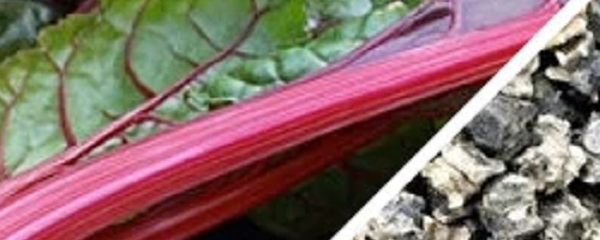

Quick Information
Proper Name
Beta Vulgaris
Common Name
Chard / Swiss Chard
Type
Edible Leaves
Hardiness Zone
3 to 10 & Overwinter Zone 6+
Blooms
Summer
Mature Size
45-60cm Tall / 24-30cm Wide
Sun Exposure
Full or Partial Sun
Soil Type
Well-Drained, Rich & Moist
Soil pH
Acidic (6 to 6.4)
Swiss Chard
Chard or Swiss Chard is a biennial, cultivated as an annual for its delicious and nutritious leaves. While most consider it part of the leafy green family like spinach, it’s actually part of the beet family. It’s nicknames including but are not limited to Silver Beet, Spinach Beet, and Perpetual Spinach. Leaves and stalks can range in colour from red, silver, white, and even pink or orange.
Swiss Chard is a very beneficial addition to not only your garden but a healthy lifestyle! It’s low calories, high in magnesium, iron, potassium, and Vitamins A, C, and K. Not only that, but it’s packed with disease-fighting antioxidants, and it’s loaded with fibre to keep you regular. Chard is known to decrease insulin resistance and lower blood sugar! On top of all that, it’s also capable of promoting weight loss when added to your well-balanced diet!
Planting
Depth
1cm Deep
Plant/Row Spacing
30cm / 30-45cm
Germination
7-14 Days
Days to Maturity
50-60 Days
Planting Season
Spring, Summer & Fall
Like any other Beet family vegetable, NEVER transplant Swiss Chard. Direct sow as soon as the ground is workable in the spring until early August to keep a fresh supply through the growing season. Chard is hearty to frost and light freezing and prefers cooler temperatures.
Direct sow your seeds approximately two weeks before your last expected frost date. Plant your seeds 1 cm deep and 5 cm apart. As those seedlings develop, wait until they’re tall enough to be used in soups or salads and thin to 20cm apart.
Care
Light – Swiss Chard can grow in partial or full sun but requires a minimum of 4 to 6 hours a day ideally.
Soil – Chard prefers well-drained, organically rich soil. Ideally the soil will be amended to a slightly acidic pH, but will tolerate neutral soil.
Water – Keep your soil moist but not soggy with a generous layer of Mulch around the base.
Temperature/Humidity – Chard is grown as either an annual(3 to 10) or biennial(6 to 10) depending on your hardiness zones. It can handle a light frost, but you will lose the plant if your temperature falls below freezing for more than a few hours. Humidity isn’t typically an issue so long as you maintain good air circulation around the plants and its moisture needs are being met.
Fertilizer – Midway through the season be sure to generously fertilize your Chard plants to keep them strong. Always be sure to amend your soil with an Organic Fertilizer(10-10-10) before you plant and ALWAYS follow the instructions on the label.
Varieties
Five Colour
This variety is commonly referred to as Rainbow due to the several distinct colours of the stems
Fordhook Giant
Large greenish-white leaves and excellent flavour along with vigorous growth.
Perpetual
This type of Chard reproduces quickly as the outer leaves are harvested and typically has a taste similar to Spinach.
Harvesting
Chard is typically ready to be harvested in as little as 50-60 days. As long as you don’t disturb the crown it will continue to produce more leaves. Remove 3 or 4 leaves from the outside of the plant using shears or a knife approximately 3cm above the soil.
Try to harvest your Swiss Chard as close to meal time as possible to ensure the freshest produce. Always keep harvested greens in the refrigerator and be sure to use them within a few days. You can also blanch and freeze the greens for later use like Spinach.
Pruning
No real pruning is required for Swiss Chard but always remove the older leaves when they start to wilt to stimulate new growth in the crown.
Propagation
Swiss Chard can be either an annual or biennial depending on your growing zone. If allowed to grow into the second season it will go to seed in the early fall the following year.
Wintering
Cut your Chard back during the fall and cover with a thick layer of mulch or straw in order to assist the plant through to the next spring.
Troubleshooting
Deer are the biggest issue when you’re attempting to grow any Chard. Typically they will leave it alone as long as there is plenty of food but come fall it’s fair game.
Slugs also leave holes in the leaves and tunnels in the ribs if the soil remains too moist.
Brown patches on the leaves are typically caused by a lack of air flow and the affected leaves must be culled in order to keep the disease to a minimum.
Education, Tutorials, Planning & More…
Click Here to Return to the Main Page


